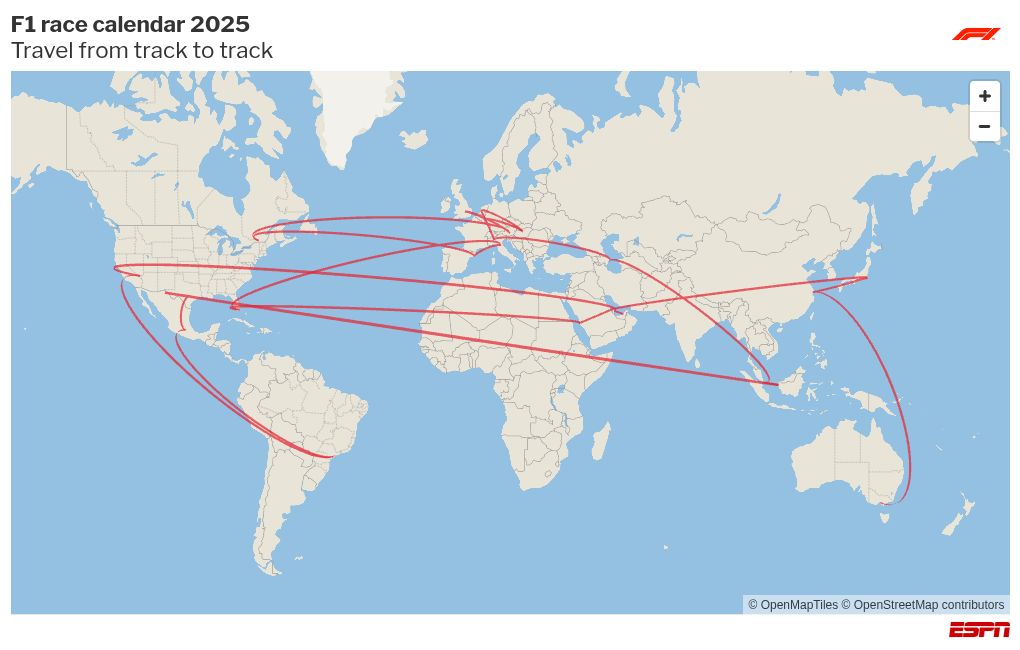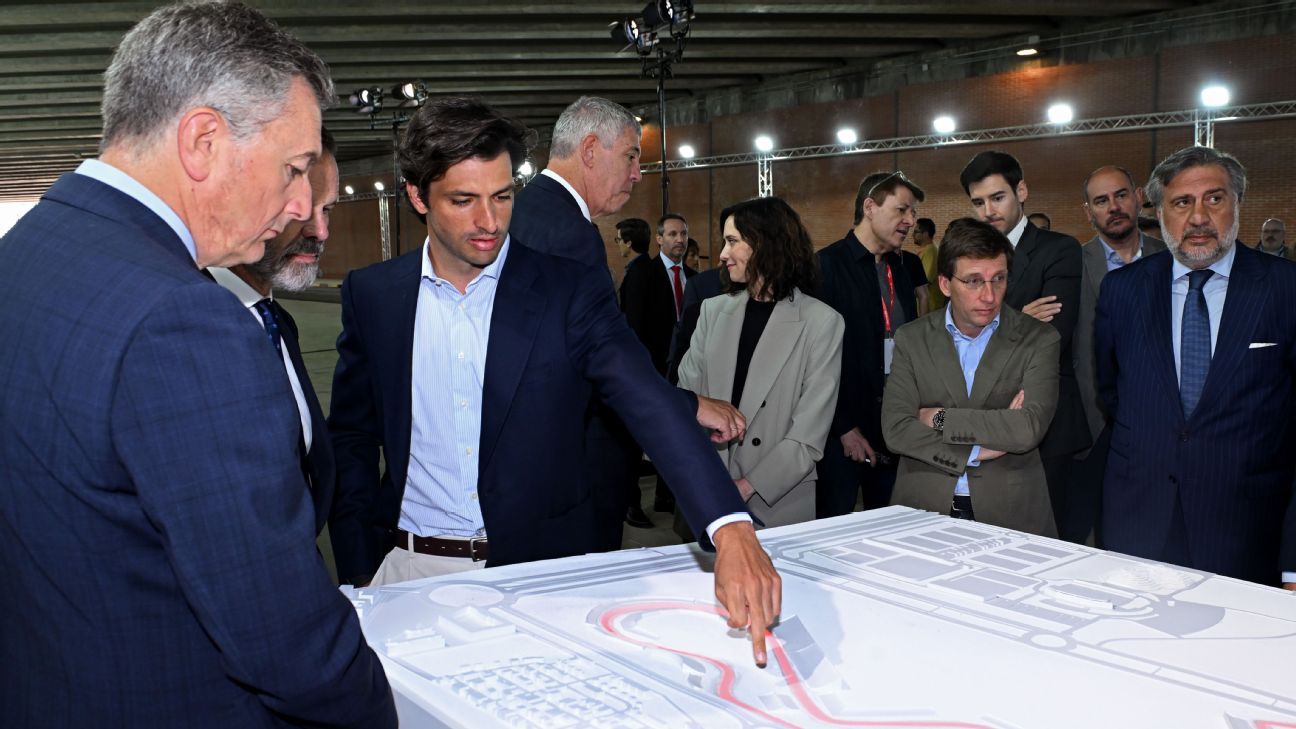## Can Madrid Become Formula 1’s Crown Jewel?
Fernando Sainz has a vision. A vision of a buzzing Madrid circuit, a symphony of roaring engines and delirious fans, a spectacle that could eclipse even the most hallowed tracks on the Formula 1 calendar. With the Spanish capital on the cusp of hosting its first-ever Grand Prix, Sainz believes this dream could become a reality. But can this ambitious project truly live up to its potential and claim its place as the best circuit in the world?

Replacing Barcelona’s Circuit de Catalunya
Carlos Sainz’s comments have sparked interest in the potential replacement of Barcelona’s Circuit de Catalunya by the new Madrid circuit. While both circuits have their own unique characteristics, the Madrid circuit might be a better fit for the Spanish Grand Prix. Circuit de Catalunya is a 4.655-kilometre track with 16 turns, which is slightly shorter and has fewer turns compared to the 5.47-kilometre Madrid circuit with 22 turns.
The Madrid circuit’s unique hybrid character, with tight street sections and a more open area with high-speed corners, could provide a more exciting racing experience for drivers and spectators alike. This could be particularly beneficial for teams and drivers, who often struggle to find the optimal setup for the Spanish Grand Prix due to the circuit’s complex layout.
However, the potential overlap next season with both circuits hosting the Spanish Grand Prix could create logistical challenges. The construction of the Madrid circuit is expected to be completed by May 2026, which means that the circuit may not be ready to host the Spanish Grand Prix until the following season. This could lead to a scenario where the Spanish Grand Prix is held at Circuit de Catalunya in 2026, and then switched to the Madrid circuit in 2027.
In the long term, the switch to the Madrid circuit could lead to a more stable and consistent racing calendar for Formula 1. With the Madrid circuit’s unique characteristics and the potential for a more exciting racing experience, it could become a fan favourite and a highlight of the Formula 1 calendar.

Formula 1’s Evolution and Future
Formula 1 has undergone significant changes in recent years, with a focus on improving the racing experience and increasing fan engagement. The introduction of new circuits like the Madrid circuit could play a key role in shaping the sport’s future.
New circuits like the Madrid circuit can bring in new fans and excitement to the sport. The circuit’s unique layout and design could provide a fresh challenge for drivers and teams, and offer new opportunities for overtaking and exciting racing. This could be particularly beneficial for Formula 1, which has struggled to attract new fans in recent years.
The construction of new circuits also presents practical considerations for teams and drivers. The Madrid circuit’s tight street sections and high-speed corners will require drivers to adapt their driving styles and teams to modify their cars. This could lead to a more competitive and unpredictable racing season, with teams and drivers having to innovate and adapt to the new circuit.

Financial and Economic Aspects
The construction of the Madrid circuit is expected to cost €83.2 million ($94.57m), which is a significant investment for the local authorities and the Spanish government. However, the potential economic benefits for Madrid and the surrounding area could be substantial.
The circuit is expected to create new job opportunities and stimulate local economic growth. The construction of the circuit will also attract new businesses and investments to the area, which could lead to a significant increase in local revenue.
The local community and businesses affected by the construction and hosting of the Spanish Grand Prix will also benefit from the economic activity generated by the event. The circuit’s proximity to the IFEMA exhibition centre will also provide opportunities for local businesses to benefit from the increased foot traffic and tourism.
The Madrid circuit’s unique characteristics and the potential for a more exciting racing experience could also lead to increased revenue for Formula 1. The circuit’s hybrid design and the potential for overtaking and exciting racing could attract new fans and increase interest in the sport, which could lead to increased revenue from broadcasting rights, sponsorships, and ticket sales.
Conclusion
In conclusion, the article by ESPN discusses Fernando Sainz Jr.’s belief that the Madrid circuit has the potential to become one of the best in the world. Key points highlighted include Sainz’s advocacy for modernising the circuit, its proximity to major cities, and the existing strong history of Formula 1 races in Spain. The significance of this topic lies in the potential economic and cultural boost that a world-class circuit could bring to Madrid and Spain as a whole.
The implications of Sainz’s advocacy are vast, as they could reshape the landscape of Madrid’s infrastructure and, in turn, elevate Spain’s global sporting reputation. The modernisation and expansion of the circuit would create more opportunities for both international events and local tourism, stimulating the local economy and boosting Spain’s standing as a competitive sports nation. Moreover, it could attract renewed interest and support from Spanish fans, further strengthening the country’s affinity for motorsport.
Looking ahead, the potential future implications of Sainz’s plea could lead to a revitalised Formula 1 presence in Spain, potentially spurring other sports and event organisers to invest in Madrid and other Spanish cities. Furthermore, such a development could inspire Spain’s young drivers to push for excellence and compete on an international stage, fostering a supportive sports culture and talent pipeline.
In the realm of Formula 1, the potential impact does not only encompass the Spanish market but could also extend to the global racing scene. A world-class circuit in Madrid could make Spain a crucial hub for the sport, boosting the popularity of the league and attracting international competitors. The Spanish government’s involvement and support can also lead to further collaborations with other leading nations in motorsport, fostering lasting relationships between racing communities.
Finally, the article concludes with a powerful statement, urging readers to ponder the enormous potential for Madrid and Spain as a result of Sainz’s advocacy: “With the right investments, infrastructure, and strategic partnerships, Fernando Sainz Jr.’s vision for Madrid’s Formula 1 circuit could lead to a new era of international sporting excellence for Spain, demonstrating the power of a single individual’s determined push for change.”
